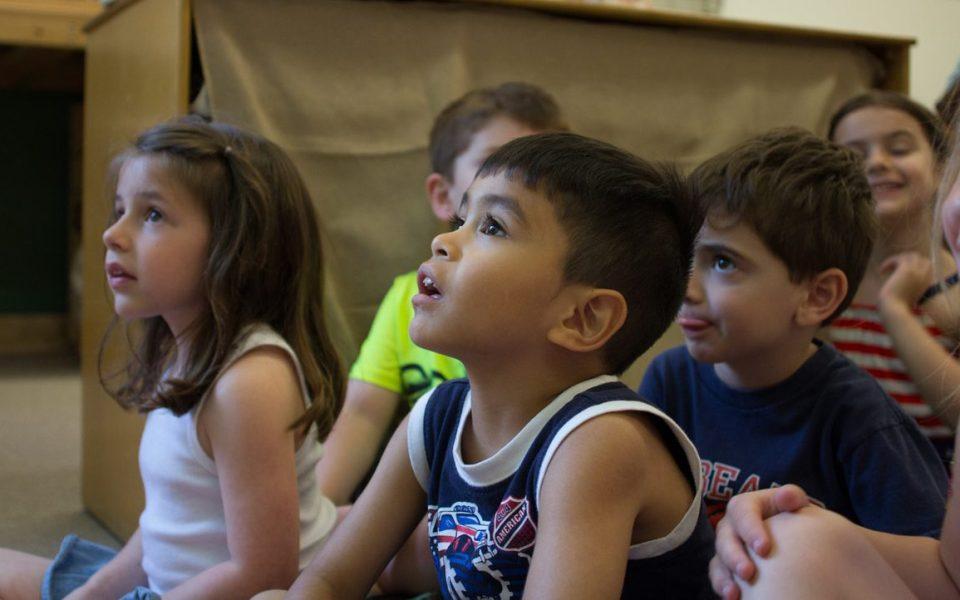“No
one’s going to love your child the way you do,” Wahnika Johnson
says. “No one’s going to care for your child the way you do. But
I’m looking for the closest thing to it.”
Johnson’s
daughter pouts in the backseat of her car as she drives her to her
first day of preschool.
Like
thousands of parents do each day, Johnson must place her child in the
care of another so she can work.
“If
I could stay at home,” Johnson says, “I’d stay at home in a
heartbeat.”
Eleven million children under the age of 5 find themselves in the care of a person besides their parents for half of their waking hours, according to No Small Matter, a film that chronicles the hurdles that Johnson and other parents face to balance life with raising children. The documentary hosted by Kaplan Early Learning Company screened at a/perture cinema on a recent Saturday afternoon.
The film itself, made by Kindling Group and Siskel Jacobs Productions, was created to organize information about the need for something called “the early childhood movement.” The campaign aims to raise awareness of the importance of a child’s pre-kindergarten years, and to advocate for a society that allows children and families to thrive. Matthew Marceron, president and CEO of Kaplan, says the screening functions as a tool to build awareness for the issue and to market for Kaplan’s business.
“There
is a common misconception that school begins at kindergarten or first
grade,” he says after the film. “The early years are of paramount
importance to ensuring the success of children as they enter
traditional school and embark on their education journey.”
Rachel
Giannini, a preschool teacher, gathers a group of more than a dozen
children onto the large mat in her classroom. She asks for a problem
that the group can solve. One child, hand held high, mentions a
fight. Giannini mimes getting into a preschool-level argument with
another teacher, the two bantering back and forth, while the children
brainstorm how to handle conflict resolution.
Unlike Giannini’s aptly named Yellow Room, the vast majority of childcare fails to provide quality curriculum according to the film. No Small Matter places the share of high-quality childcare facilities in the country at 10 percent.
“Of
course, our economy and society have changed,” Marceron explains,
“so more women are in the workforce, more families have two working
parents, and the blessing of child-rearing is shared with childcare
providers.”
The
film lays out a wide array of issues that contribute to the larger
gap in both at-home and professional education for children under
six. Low pay for childcare professionals often leads hard-working
educators to leave the field. Parents may work a job or two each to
fund both housing and childcare. Poverty leaves families at a harsh
disadvantage.
Aside
from the personal anecdotes and peeks into the personal struggles of
everyday parents, the film consults a great deal of experts,
balancing emotional stories with expert opinion. Deborah Phillips, a
professor at Georgetown University, lays out an idea of what the
ideal learning environment for a child under 6 would look like.
“You
don’t see a bunch of kids sitting in desks,” Phillips says.
Giannini
leads a group of children outside and kneels down beside a gardening
box. Armed with some nonfiction picture books and dirt-covered hands,
the children dig for bugs to learn about. A child yells that they
found a rock-looking object. They guess it might be an egg sac.
Giannini perches a picture book on the wooden planter and opens it
up, displaying the pages to the group to see if they can match up
what it is. Later, she asks the small group to share what type of egg
they found with the class.
“A
praying mantis!” a child shouts out.
Join the First Amendment Society, a membership that goes directly to funding TCB‘s newsroom.
We believe that reporting can save the world.
The TCB First Amendment Society recognizes the vital role of a free, unfettered press with a bundling of local experiences designed to build community, and unique engagements with our newsroom that will help you understand, and shape, local journalism’s critical role in uplifting the people in our cities.
All revenue goes directly into the newsroom as reporters’ salaries and freelance commissions.


Leave a Reply